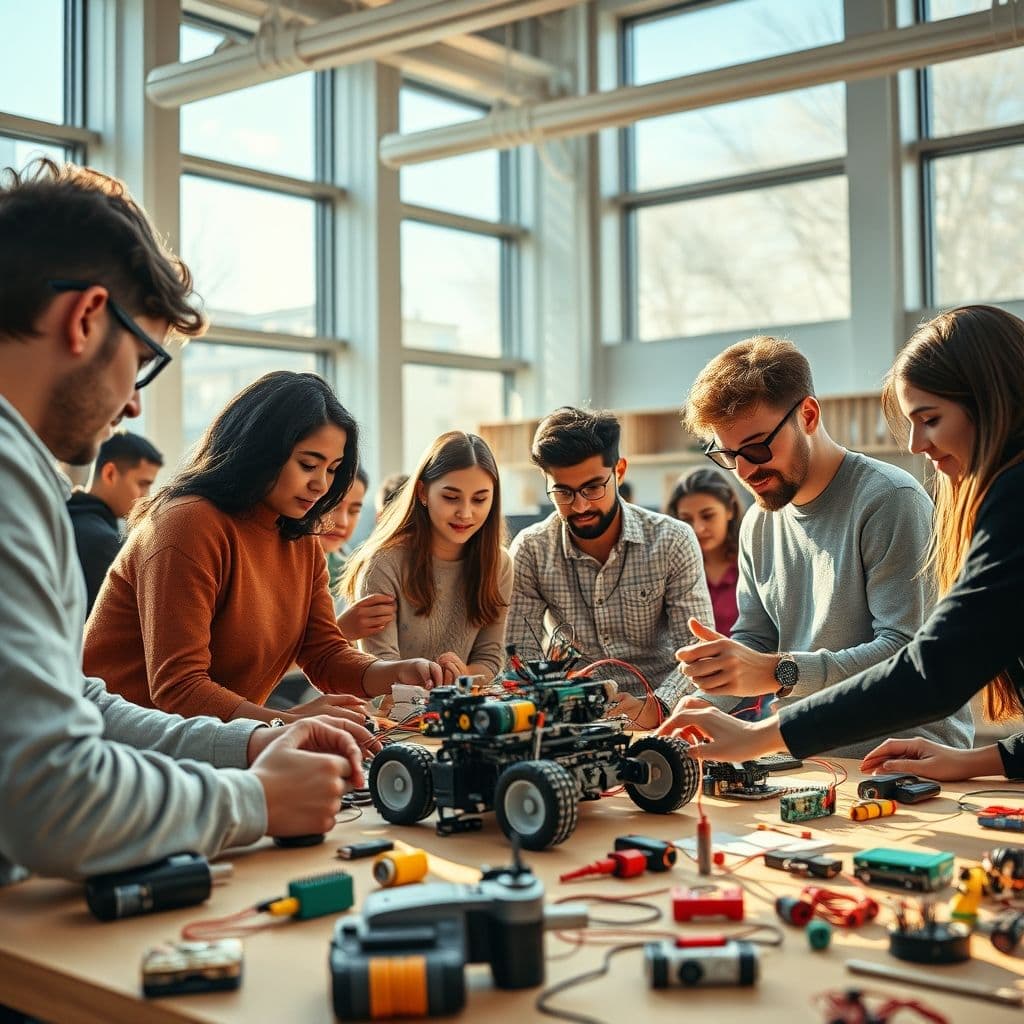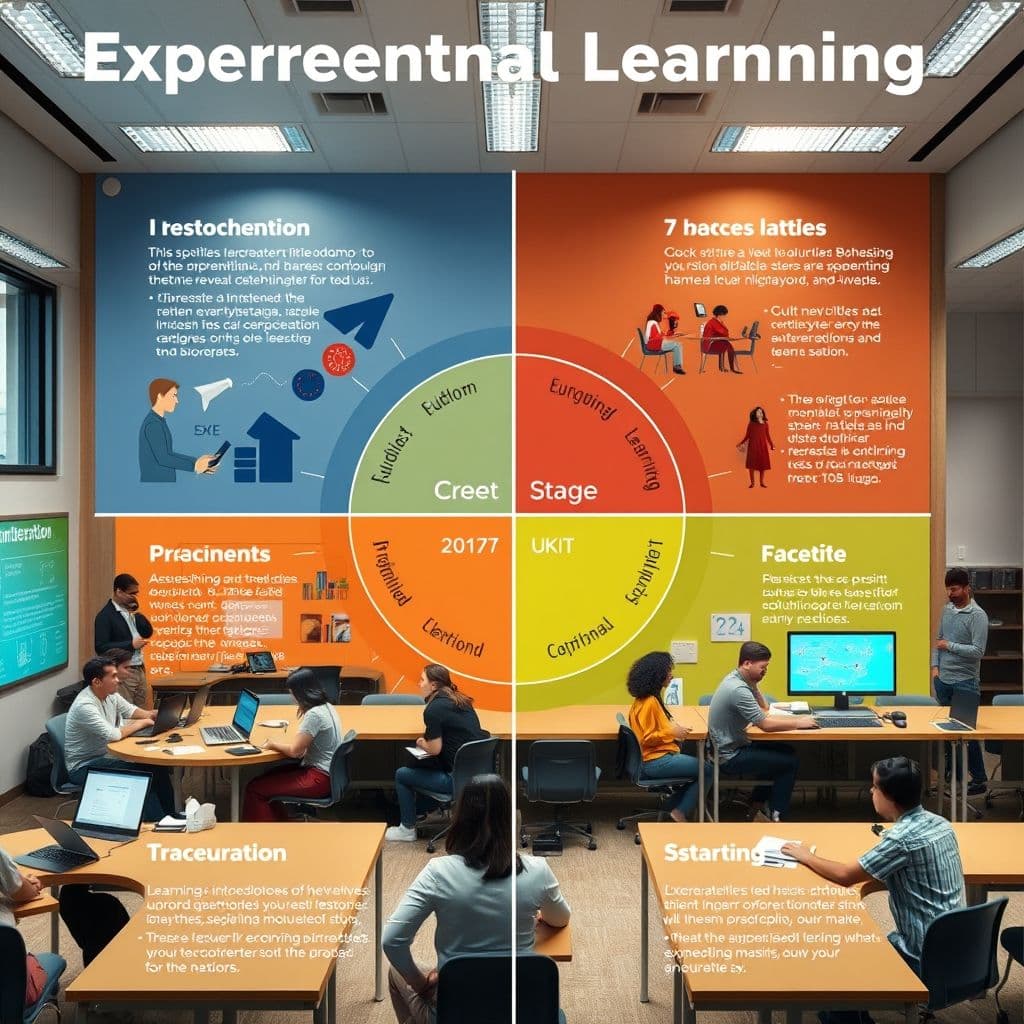Mastering Experiential Learning: A Step-by-Step Guide to Hands-On Education

Experiential learning is a powerful approach that transforms passive education into active, hands-on experiences. By engaging directly with real-world scenarios, learners can deepen their understanding and retain knowledge more effectively. In this guide, we'll walk you through the essential steps to master experiential learning, from understanding its core concepts to designing and evaluating impactful activities. Whether you're an educator, trainer, or lifelong learner, these strategies will help you harness the full potential of experiential learning. View original learning path
Step 1: Understand the concept of experiential learning
Experiential learning is an educational approach that emphasizes learning through direct experience and reflection. Unlike traditional methods that rely on lectures and textbooks, experiential learning immerses learners in real-world scenarios where they can apply knowledge and skills in meaningful ways. This approach is rooted in the idea that people learn best by doing, reflecting on their experiences, and drawing insights from them. For example, instead of reading about how to build a bridge, students might design and construct a small-scale model, learning through trial and error.
Step 2: Familiarize yourself with the experiential learning cycle
The experiential learning cycle, developed by David Kolb, consists of four stages: concrete experience, reflective observation, abstract conceptualization, and active experimentation. In the concrete experience stage, learners engage in a hands-on activity. Next, they reflect on what happened during the experience (reflective observation). They then analyze and draw conclusions from the experience (abstract conceptualization). Finally, they apply these insights to new situations (active experimentation). For instance, after a team-building exercise, participants might reflect on their communication, derive lessons about collaboration, and apply these lessons in future projects.

Step 3: Identify opportunities for experiential learning
Experiential learning can happen anywhere—in classrooms, workplaces, or even daily life. Look for real-world experiences that align with your learning objectives. For example, a biology class might visit a local ecosystem to study biodiversity, while a business course could simulate a startup pitch competition. Reflection is key here; after the experience, learners should have time to think deeply about what they observed, felt, and learned. Encourage journaling, group discussions, or guided questions to facilitate this process.
Step 4: Plan and design experiential learning activities
Effective experiential learning activities start with clear learning objectives. What should participants know or be able to do after the experience? Next, design the activity to meet these goals. For instance, if the objective is to improve problem-solving skills, you might create a scavenger hunt with puzzles that require creative thinking. Ensure the activity is challenging yet achievable, and consider logistics like time, materials, and safety. A well-designed activity balances structure with flexibility, allowing learners to explore and discover.
Step 5: Facilitate experiential learning
As a facilitator, your role is to guide learners without taking over. Encourage active engagement by asking open-ended questions and providing minimal instructions to spark curiosity. Offer support and guidance when needed, but let learners navigate challenges independently. For example, during a science experiment, instead of giving step-by-step directions, you might ask, 'What do you think will happen if we change this variable?' This approach fosters critical thinking and ownership of the learning process.

Step 6: Promote reflection and debriefing
Reflection is where the magic of experiential learning happens. Use reflection prompts like 'What surprised you?' or 'How would you approach this differently next time?' to deepen insights. Debriefing techniques, such as group discussions or individual journaling, help learners consolidate their experiences. For example, after a role-playing exercise, you might ask participants to share how they felt during the activity and what strategies worked best. This step transforms raw experience into lasting learning.
Step 7: Assess and evaluate experiential learning
Assessment in experiential learning goes beyond traditional tests. Consider methods like portfolios, presentations, or self-assessments that capture the learning journey. Feedback and reflection are also crucial; ask learners to evaluate their own progress and identify areas for growth. For instance, after a community service project, students might create a presentation showcasing their contributions and lessons learned. This holistic approach ensures that the learning experience is meaningful and measurable.
Conclusion
Experiential learning is a transformative approach that turns passive education into active, engaging experiences. By understanding the learning cycle, designing thoughtful activities, and fostering reflection, you can create powerful learning opportunities that stick. Whether you're teaching a class, training a team, or pursuing personal growth, these steps will help you harness the full potential of hands-on learning.
Frequently Asked Questions
- How long does it take to master experiential learning?
- Mastering experiential learning is an ongoing process that depends on your context and goals. Start with small activities and gradually incorporate more complex experiences as you gain confidence. Consistent practice and reflection will deepen your skills over time.
- What are common mistakes beginners make?
- Common pitfalls include over-structuring activities (limiting exploration), skipping reflection (missing key insights), and underestimating logistics (e.g., time or materials). Focus on balance—provide enough guidance to keep learners on track but enough freedom to encourage discovery.
- Can experiential learning be used in online settings?
- Absolutely! Virtual simulations, collaborative projects, and real-world tasks (e.g., interviewing professionals) can all be adapted for online learning. The key is to ensure active engagement and structured reflection, even in digital environments.





